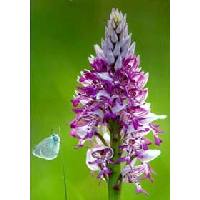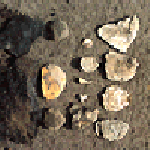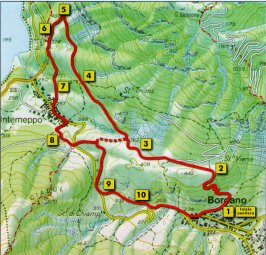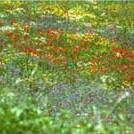La Natura

La Fauna
La particolare posizione geografica della regione Friuli-Venezia Giulia, vera e propria area di frizione tra diverse regioni biogeografiche, rende atto della particolarità del suo singolare patrimonio faunistico. Molte specie animali penetrano in Italia attraverso i confini orientali e settentrionali della regione Friuli Venezia Giulia.
L'area considerata non si limita al bacino idrografico del lago dei Tre Comuni ed il monte S. Simeone, ma è compresa entro un raggio di 8-10 chilometri dal centro dell'invaso; ciò permette di comporre un quadro faunistico molto più ricco.
Queste specie, Anfibi, Rettili e Mammiferi terricoli ma anche Uccelli (nidificanti), Molluschi e Insetti perlopiù si fermano sul suolo regionale e soltanto in alcuni casi si spingono ai territori alpini e prealpini del Veneto e Trentino-Alto Adige.
Tra queste entità animali, veri e propri gioielli faunistici del Nord Est italiano, spiccano alcuni Mammiferi quali il riccio orientale, lo sciacallo dorato, il topo dal dorso striato, alcuni Anfibi ed alcuni Rettili.

La Flora
Anche la componente floristica raggiunge valori elevati poichè vi gravitano quasi 1200 specie di piante vascolari sulle 3000 dell'intera regione. Questa alta concentrazione di specie, determinata dalla strategica posizione baricentrica tra pianura e montagna, tra popolamenti insubrici ed illirici, tra popolamenti padani ed alpini, che ha portato, nella ricolonizzazione postglaciale, alla attuale composizione floristica, viene ulteriormente arricchita da numerosi elementi endemici di origine terziaria (paleoendemismi), che in questi settori prealpini hanno trovato rifugio durante le glaciazioni quaternarie.
La Geologia

La caratteristica principale del Monte dal punto di vista morfologico è rappresentata dalla sua sommità spianata. Questo singolare pianoro rappresenta il relitto di un'antica superficie di spianamento, di età probabilmente pliocenica, sopravvissuta all'intensa erosione che le correnti principali dei due ghiacciai provenienti rispettivamente dal bacino del Fella e del Tagliamento e che abbracciando il Monte, si riunivano a valle del monte Naruint-Brancot proseguendo verso la
pianura friulana.
Al ritiro dei ghiacci, avvenuto circa 10.000 anni fa, si produsse una decompressione tale dei versanti da produrre numerose frane di cui alcune documentabili ancora oggi e dall'evidente accumulo di detriti riscontrabili. Numerose incisioni solcano i ripidi versanti del Monte, nessuna delle quali è interessata da un corso d'acqua perenne.
Le rocce quali dolomie e calcari dolomitici, calcari e calcari selciferi, marne scagliose e conglomerato del Tagliamento che costituiscono il monte S.Simeone posseggono un'età compresa fra i 200 e i 65 milioni di anni ed appartengono al periodo che vanno dal Norico al Cretacico Superiore.

Sentiero Entomologico
A pochi passi da Udine, alle pendici del Monte S.Simeone, il Comune di Bordano ha progettato e realizzato il Sentiero Entomologico, un percorso guidato alla scoperta della piccola fauna del "Paese delle Farfalle".
Il Sentiero Entomologico di Bordano vuole essere l'occasione per quanti, appassionati della natura o semplici escursionisti, vogliano avvicinarsi al mondo delle farfalle.
Dieci cartelli, disposti lungo il percorso, guidano il visitatore alla conoscenza della fauna che popola il monte S.Simeone, ricca di oltre 100 specie di farfalle diurne e circa 550 di notturne.
Il Comune di Bordano in collaborazione con la Cooperativa Naturalisti "Michele GORTANI" di Udine amplia la sua offerta di turismo naturalistico di qualità con la realizzazione di un Sentiero Entomologico che percorre le pendici del Monte S. Simeone. Il monte, che riassume quasi completamente la realtà ambientale delle Prealpi Carniche, è stato da sempre oggetto di ricerche entomologiche che ne hanno messo in rilievo la ricchezza faunistica e la notevole diversità biologica.
Dislocazione dei cartelli:
Il Monte San Simeone
Dall'Uovo alla farfalla
Osserviamo un adulto
Farfalle in Primavera I
Farfalle in Primavera II
Farfalle in Estate I
Farfalle in Estate II
Farfalle Notturne
Farfalle in Estate III
Conservazione e protezione
La Vegetazione

Per la sua posizione geografica isolata, l'ottimale insolazione e la varietà microclimatica, il monte San Simeone esprime il massimo della sua potenzialità vegetazionale rappresentando, nonostante la modesta altitudine, una sintesi quasi completa della realtà ambientale e vegetale delle Prealpi Friulane.
In circa 1300 m di escursione altitudinale si passa infatti dalla vegetazione spondicola e ripariale del fiume Tagliamento e del lago di Cavazzo, ai macereti montani con larici e mughi, dalle rupi con i lecci alle doline sommitali innevate.
Fisionomicamente la montagna presenta una copertura vegetale non omogenea da versante a versante per la differente morfologia e per il concorso di fattori accidentali quali franosità e incendi o per pratiche colturali protratte nel tempo quali terrazzamenti, ceduazioni, creazione di prati e pascoli e loro abbandono.
Nature (English version)
Fauna
The distinctiveness of the Friuli-Venezia Giulia fauna is mainly due the region being the crossroad of different bio-geographical areas.
In fact, many animal species enter Italy on the Eastern and Northern borders of Friuli Venezia Giulia.
The territory we consider is larger than the one delimitated by the hydrographic basin of the Cavazzo lake and Mt. San Simeone, extending itself with a radius of 8/10 kilometres from the basin centre.
In this area live a great number of species: amphibians, reptiles and terrestrial mammals together with birds, molluscs and insects.
The great majority of them is sedentary while a few travel as far as the Alps and their foothills in the regions of Veneto and Trentino Alto Adige. Among these species, some can be positively considered as jewels, such as the oriental hedgehog, the golden jackal, the back-striped vole, a few amphibians and reptiles.
Flora
Of the 3,000 species of vascular plants thriving in Friuli Venezia Giulia, 1,200 are present in this territory. Such an incredible concentration is due to the central position of this area, situated between plains and mountain ranges, and to the migration of people from eastern Europe, the Po valley and the regions north of the Alps.
Settling in this area during the post-glacial re-colonization, these populations contributed to the creation of the present flora. The number of species was further increased by several endemic varieties, originated during the Tertiary, that have survived here the rigours of the Quaternary glaciation.
Geomorphology of the Territory
The main peculiarity in the morphology of Mt. San Simeone is represented by its levelled top.
This plateau is the relict of an ancient levelling surface, probably dating back to the Pliocene epoch, which survived the intense ice erosion from two glaciers, one originating from the Fella's basin and the other from the Tagliamento's, which encircled the mountain and met below Mount Naruint-Brancot and reached the Friuli plain. Once the glaciers started to recede, about 10,000 years ago, they produced a powerful decompression on the mountain faces, originating several landslides whose effects are still clearly visible in the configuration of the ground and in the presence of tills.
In the past, numerous riverbeds have carved the steep slopes of the mountain. Today, none of these watercourses has waters flowing in it all through the year. The rocks that form Mt San Simeone are dolomites, dolomitic and flint limestones, marls and conglomerates from the Tagliamento river. Their formation took place between 200 and 65 million years ago and they belong to a geological period going from the Norico to the Cretaceous.
Entomologic Trail
Not far from Udine, on the slopes of Mount San Simeone, the common of Bordano has designed and created an Entomologic Trail, that allows the visitor to discover the small and fascinating inhabitants of the "Butterfly Country". The entomologic trail of Bordano represents an opportunity for all nature and walking lovers, of coming into contact with the world of butterflies. Ten signs, dislocated along the trail, show the visitors the most suitable places where the 1,000 diurnal species and the over 550 nocturnal ones live and reproduce themselves. Thanks to this trail, winding on the slopes of Mt San Simeone, the common of Bordano in co operation with the Cooperative Naturalisti "Michele Gortundi" of Udine, can offer to the tourist a novel way of coming into contact with nature in an extraordinarily rich environment. In fact, the habitats of Mt San Simeone include all those present on the foothills of the Carniche Alps and several researches carried out in this region have confirmed the abundance of animal species and their remarkable biological diversity.
Location of signs:
Mt. San Simeone
From the egg to the butterfly
Let's observe a grown-up butterfly
Butterflies in Spring I
Butterflies in Spring II
Butterflies in Summer I
Butterflies in Summer II
Nocturnal Butterflies
Butterflies in Summer III
Preservation and protection
Vegetation
Thanks to its isolated position, optimal insolation and variety in microclimates, Mt. San Simeone can offer an almost complete range of environments and vegetation habitats peculiar to the foothills of the Friuli's Alps. Ascending the approx. 1300 metres which divide the plain from the peak of the mountain, we can firstly admire the vegetation characteristic of the slopes and the banks of the Tagliamento's river and the Cavazzo's lake, followed by larches and mugo pines typical of the wet mountain's areas. Higher, we find rocky stretches covered with holm-oaks and finally the snow-covered dolines of the summit. The non-homogeneous vegetation of the slopes is due to the different morphology of the ground and also to landslides, fires and cultivation practices such as terracing, felling and the creation of meadows and pastures now left untended. Despite these interferences, the vegetation on Mt San Simeone, even with the inevitable asymmetry between its slopes, presents a pretty regular division into zones according to the altitude.
